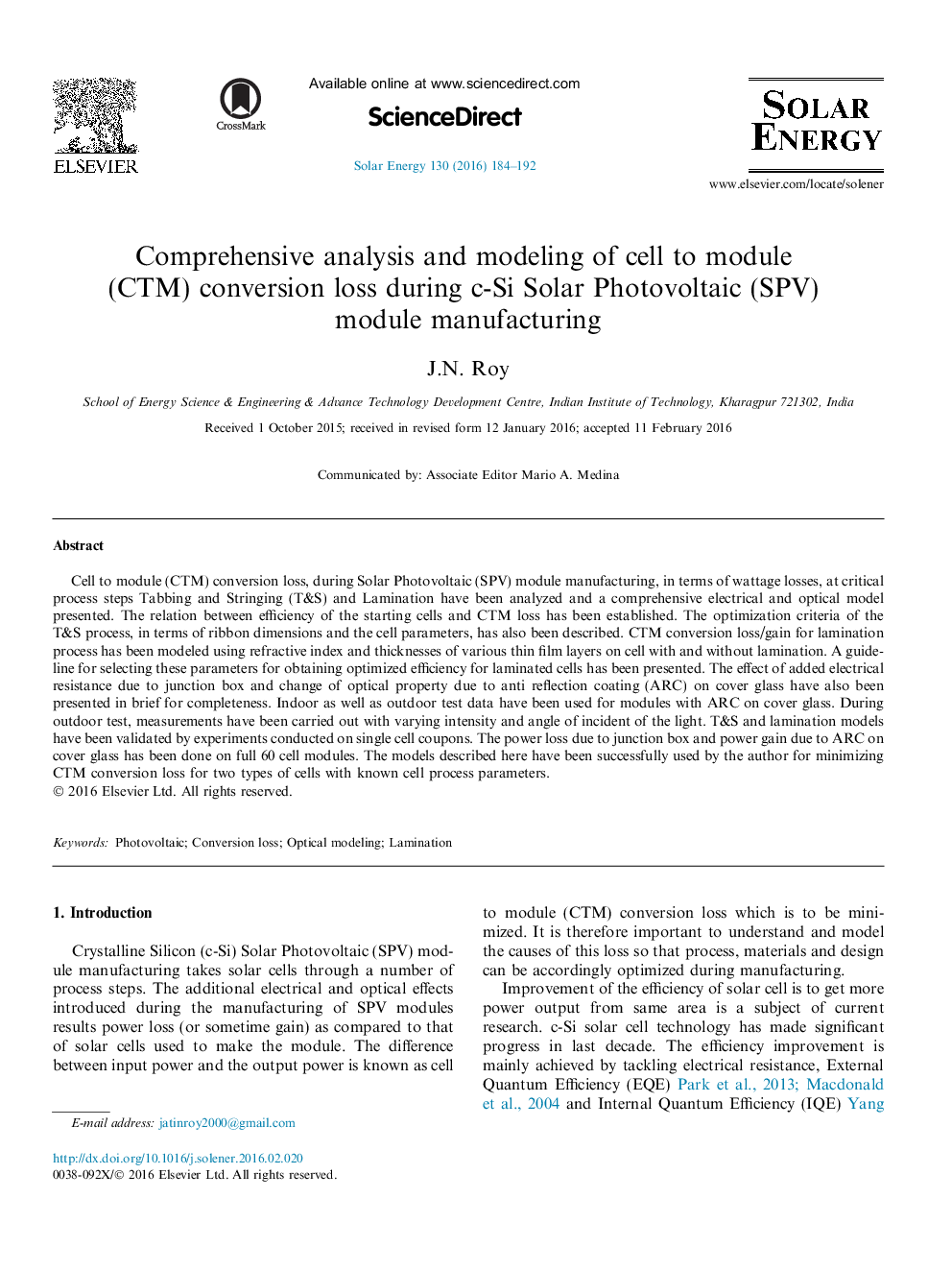| Article ID | Journal | Published Year | Pages | File Type |
|---|---|---|---|---|
| 7937171 | Solar Energy | 2016 | 9 Pages |
Abstract
Cell to module (CTM) conversion loss, during Solar Photovoltaic (SPV) module manufacturing, in terms of wattage losses, at critical process steps Tabbing and Stringing (T&S) and Lamination have been analyzed and a comprehensive electrical and optical model presented. The relation between efficiency of the starting cells and CTM loss has been established. The optimization criteria of the T&S process, in terms of ribbon dimensions and the cell parameters, has also been described. CTM conversion loss/gain for lamination process has been modeled using refractive index and thicknesses of various thin film layers on cell with and without lamination. A guideline for selecting these parameters for obtaining optimized efficiency for laminated cells has been presented. The effect of added electrical resistance due to junction box and change of optical property due to anti reflection coating (ARC) on cover glass have also been presented in brief for completeness. Indoor as well as outdoor test data have been used for modules with ARC on cover glass. During outdoor test, measurements have been carried out with varying intensity and angle of incident of the light. T&S and lamination models have been validated by experiments conducted on single cell coupons. The power loss due to junction box and power gain due to ARC on cover glass has been done on full 60 cell modules. The models described here have been successfully used by the author for minimizing CTM conversion loss for two types of cells with known cell process parameters.
Related Topics
Physical Sciences and Engineering
Energy
Renewable Energy, Sustainability and the Environment
Authors
J.N. Roy,
